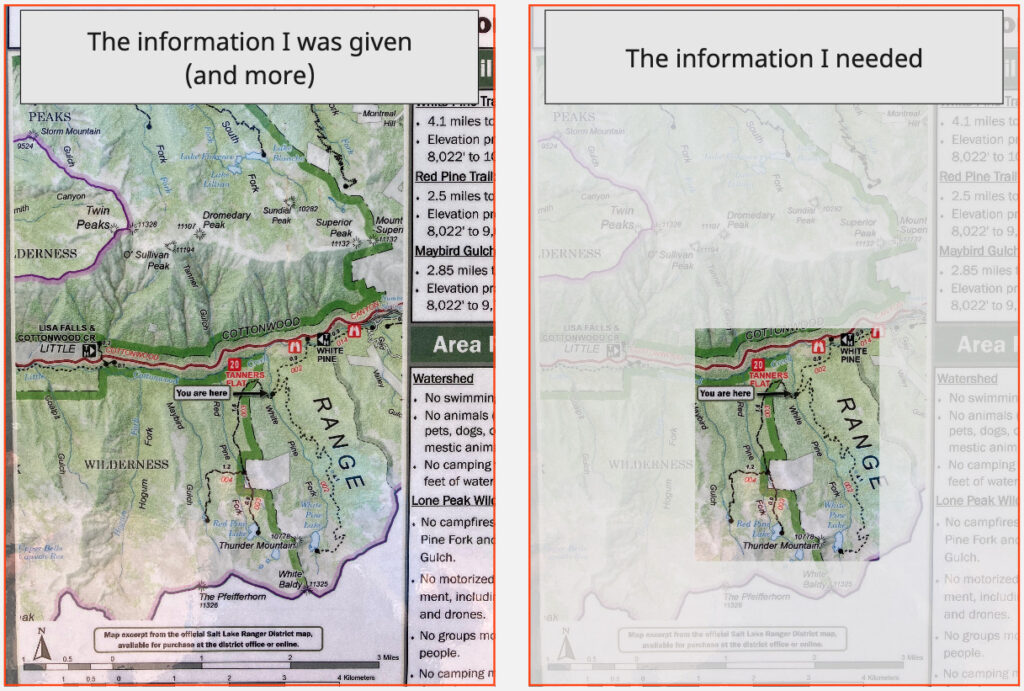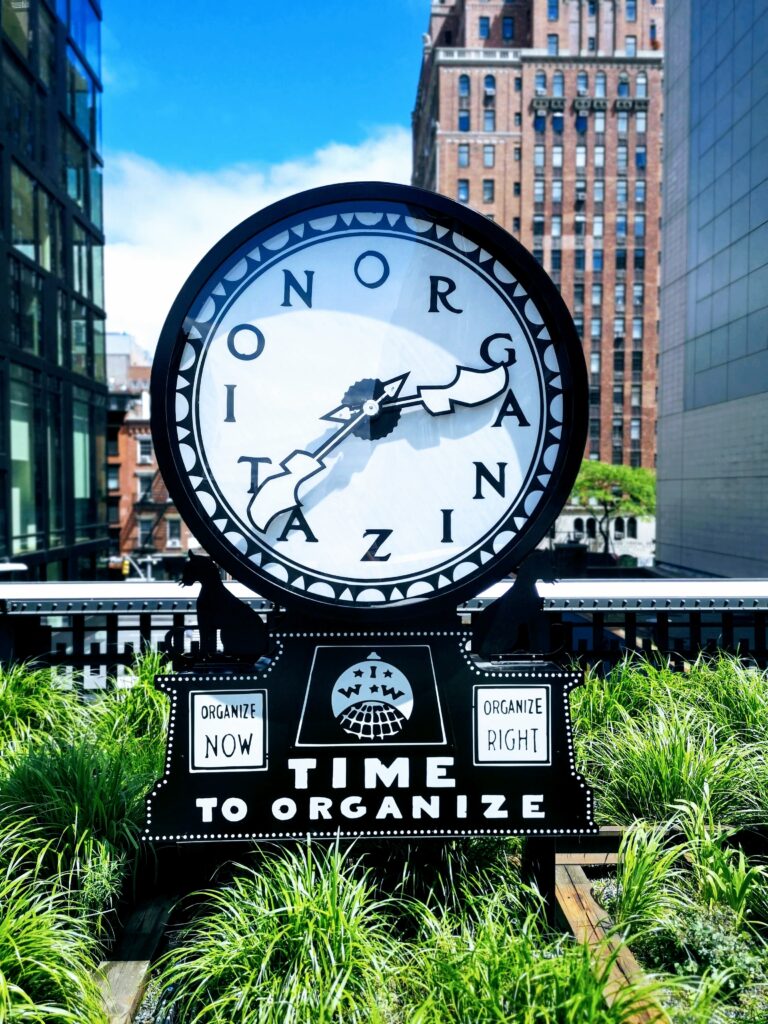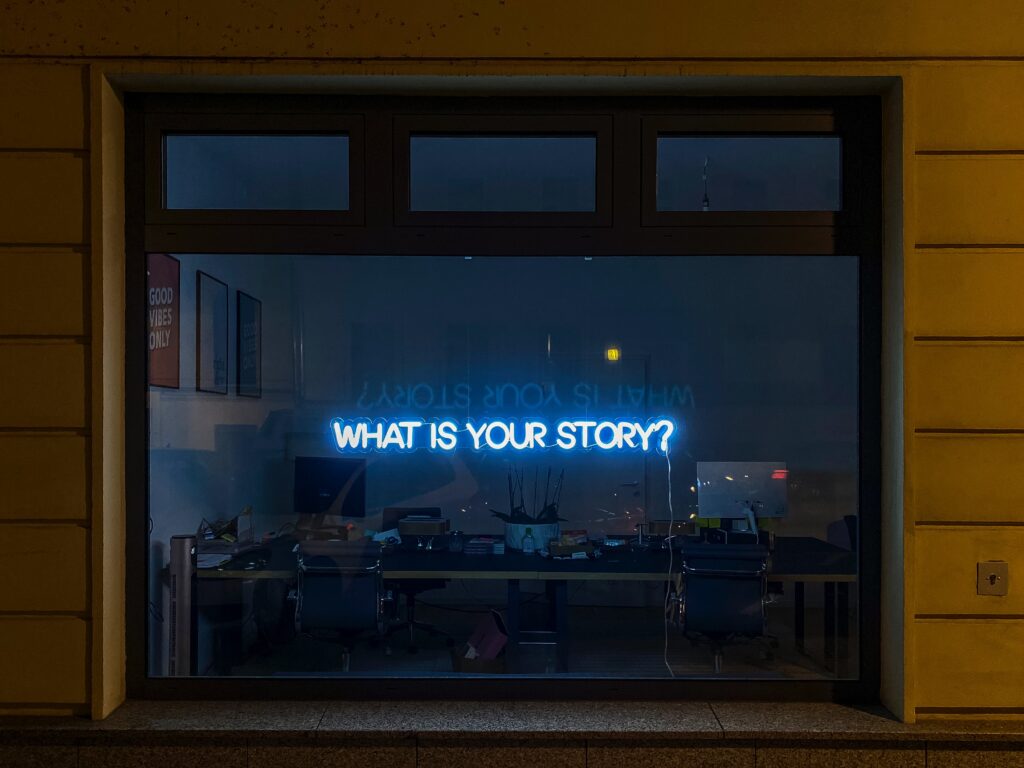Your DAM use cases are only as good as the humans involved
16 November 2023
Building a digital asset management (DAM) program involves many decisions—from selecting a system and configuring interfaces, to architecting workflows. To set your DAM up for success, it is critical to involve your users from the beginning so you can develop and crystalize DAM use cases that will guide decision-making and ease change management.
A common mistake is to neglect taking the time to truly learn about the users, what they need from a system, and what motivates them. Without involving users, you may arrive at a seemingly logical and technically correct solution, but users may not see its relevance.
This risks the DAM program’s future viability. Users are likely to abandon a system that introduces stumbling blocks. Without involving users, you also risk focusing on the wrong problem or building solutions that don’t address their needs.
Invite your users to help you determine the right problem to solve and what adds value to their work. Put humans at the center of your DAM use cases.
From Trail System to Information System
On a recent sunny Saturday, I stood at a fork on a hiking trail staring at a map mounted on a prominent bulletin board. What stood out first to me were the broad lines in purple and green. But they were not the footpaths I was looking for. On a closer look, I saw the trails were marked in skinny, black dotted lines in a much smaller section of the map. The highlighted lines were in fact official borders of the wilderness area.
It occurred to me that this map was made from the perspective of the Forest Service. Standing at this juncture under the hot sun, where I had the dirt paths, tree groves, and running creek in front of me, I did not care where the watershed boundary ended or where the research area began. I was looking only for where the trail splits on the map so I could know whether to go left or right.

Now, I am not fit to argue how the National Forest Service should display its trail maps—I am no cartographer (maybe in an alternative life I dream about!)—but I am a user of trails. This gives me a perspective on what information is useful to communicate to an average trail user. When it comes to the design of the system’s interactions with users, this perspective becomes relevant.
Just as hikers are not the Forest Service, your users are not you: while you have a view of a whole system, users interact with a specific slice of it. And they have a keen awareness of what makes it work well for them.
An information system, such as a digital asset management system, is like a trail system.
If you are managing an enterprise-wide information system, you have a design problem to solve. At the center of a design problem are humans—groups of users and stakeholders.
Their work, their needs, and their minds are inconsistent, ever-changing, hardly linear, and sometimes contradictory. The system is meant to help various teams to do their work, in a way that not only helps the individuals but the collective as a whole. Involve them in the process of developing DAM use cases; learn their perspectives and programmatically incorporate their feedback. Don’t rely on your own assumptions. Don’t create your system implementation in a vacuum.
What is human-centered design?
In the day-to-day work of managing a complex program and suite of technology, some problems grow amorphous. Things can feel messy. You are simultaneously supporting the teams who create content, those who contribute digital assets to the system, and those who need to quickly search and find items and the right information about them. There are stakeholders who want the system to save time, grow programs, provide accurate data, and apply governance and security policies.
Facing the enormity of these problems in a DAM program, human-centered design (HCD) provides a helpful framework. It is a concept increasingly applied in the design of intangible aspects of our world—digital spaces, services, interactions, and organizations.
Yet for systems like DAM—often used by staff internal to an organization—the practice is less commonly adopted. “Human-centered design” might sound like just a catchphrase, but it is defined by an ISO standard (ISO 9241-210:2019)! Officially, HCD is an “approach to systems design and development that aims to make interactive systems more usable by focusing on the use of the system and applying human factors/ergonomics and usability knowledge and techniques.”
In simple terms, it is about involving humans in both the process and the outcomes of the designing of solutions, using their specific needs relevant to the defined problem to guide the solution-seeking.
Let’s look at how the concept of human-centered design can be applied in a digital asset management program. (Or, really, any program managing an information system.)
But first, why does human-centered design matter?
Why engage users?
1. To validate the solution design
User feedback allows you to validate whether the enterprise technology meets the actual needs of its intended users.
2. To identify usability issues
User testing helps surface usability issues, bottlenecks, and pain points that might not be apparent during internal development and testing.
3. To reduce risk
Testing with actual users and gathering user feedback along the way allows for iterative improvement. This helps reduce the likelihood of costly setbacks after implementation and lack of trust among users.
4. To enable change management and improve user adoption
When users feel their feedback is valued and incorporated into the technology, they are more likely to adopt it enthusiastically and become advocates for its widespread use within the organization.
5. To facilitate continuous improvement and scalability
Regularly seeking user input allows the enterprise technology to stay relevant to evolving user needs and changing business requirements.

Applying human-centered design to solve common digital asset management problems
Here are some common problems organizations encounter with their digital asset management strategies, and how developing DAM use cases with human-centered design can help solve them:
No central repository
Collection items, files, or content are in disparate places, organized in a way that makes sense to only a select few, and are artifacts of an evolving team.
To start, learn about the user’s scope of content and their mental model for organizing and searching digital assets. Determine whether a DAM or central repository is needed and viable for the organization. Further define what constitutes digital assets and who the users are in this context. Define the requirements of such a system in the form of user stories from the human’s perspective prior to shopping for technology products and making a selection decision.
“Where is that photo I’ve seen before?”
Users frequently cannot find the digital assets (or do so quickly) or have trouble navigating the site.
To start, investigate what the root problem might be and what problem you want to solve. Learn from the users—through interviews, observations, and testing—what they are struggling with. Is this an issue with the layout of the interface? Or is this an issue with the metadata of the digital assets?
Misuse or confusion on sharable content
The collection needs guardrails and governance to help users avoid mistakenly sharing or misusing content.
To start, define the problem to tackle. Gather information on current constraints such as workflow schedules. If the problem is preventative, programmatically plan out the appropriate access and labeling of content. Configure business logics that conform to user needs and DAM use cases. If the problem has to do with users’ understanding of the content, conduct user research to learn characteristics of the metadata attributes important to the users whose problem you aim to address.
Onboard more teams
The DAM system was originally launched with one team based on how they organize digital assets and campaigns; now it is time to onboard yet another team that creates a new type of assets. Each team has its unique ways of accessing and organizing assets and its own metadata requirements that govern its workflows.
To start, learn about the differences between various teams, how they organize their content, and the workflows they have for creation, ingest, and/or publishing. Extract user stories and generalize representative functional requirements. Use the requirements as benchmarks, not a checklist, for satisfying various user needs.
Tips on considering users in DAM use cases
There are different ways to think about users in a DAM program. When you sit alongside users to learn about their day-to-day workflows and their stumbling blocks, you are zoomed in. You are borrowing your users’ lenses and viewing the problem through their perspectives. When you return to your desk and consider how a need can be met by the system’s capabilities, you take on a broad perspective. It is then important to make design decisions that are relevant to multiple groups, consistent across the system, and maintainable over time.
Tip #1 You are not your users and stakeholders
Without building DAM use cases and user stories based on real humans, you run the risk of imagining solutions based on your and your team’s own assumptions and preferences. You end up designing a solution that makes sense according to your own (and let’s be honest, biased) perspective. What flows logically to you might become an obstacle to a different group. And you are left scratching your head wondering why users get so confused by a certain step.
Tip #2 Zoom out, and bring the alignment
Your solutions should be programmatically applied and create consistency. The idea is not to make a one-to-one replication of what one user or one group may say they want. Rather, focus on what they need to accomplish. If they want a button because they need to quickly press it every time to complete a repeating task, why not design a solution that batches the step and eliminates the repeating step?
A lot of times, users are too close to the system. For user testing and research to be effective, it is important to ask the right questions. Then, it is up to the researcher and the manager of a DAM program to bring the elements together in the full picture.

Tip #3 Investigate the problem
It is important to begin learning about the problem space by asking questions. Investigate the original problem that initiated this project. Almost always, you would need to investigate and redefine the problem.
Talking to users, you might learn that users are frustrated with the workflow, that the content team thinks of their work in categories contradictory to how they are arranged in the DAM, or that there is a technical flaw that causes access barriers. The first is a finding on someone’s attitude, the second a functional requirement, and the third a system oversight or bug. All of these factors contribute to the problem you are trying to solve.
Some of these ideas require further user research; some may not be true solutions but rather bandaids; some may take a much longer timeline or a bigger budget. There are constraints that every design must work within.
Carefully defined DAM use cases and user needs help determine which solution to pursue. Without taking the time to learn about the content team, how they interact with the digital asset management system, and how other teams search for the content they contributed, it won’t be clear what solution gets to the root of the problem.
Summary
A human-centered approach to managing your digital asset management program helps you ensure you are focusing on the right problem. It helps you build the DAM use cases, distilling the needs you aim to satisfy.
It helps reduce risks by involving users in an iterative process, gathering information, and creating a feedback loop. Involving users in your process also helps to build trust with stakeholders. Prepare users for the transition in DAM as the program grows, introduces new technologies, or onboard new teams. Finally, be sensitive to the human context. Exercise humility, and check your biases and assumptions.
Human-centered design at AVP
At AVP, we apply human-centered design to help solve a variety of information problems. Some examples:
- To guide how collections of massive textual data may implement AI-powered metadata enrichment processes in ways that are useful and ethical, AVP provided a prototype for structuring annotation crowdsourcing and involving various types of users in the process.
- To help program managers determine how technologies should be supported and prioritized, AVP conducted user research and delivered quantitative and qualitative data showing how successfully team members were using the myriad tools.
- An organization needed evidence to support a decision on the future development of a software application. AVP combined technical analysis with qualitative user research that considered human factors—such as technical proficiency and individual motivations—to bolster the recommended decision.
Creating a successful DAM RFP
10 November 2023
In the world of digital asset management (DAM) system selection, requests for proposals (RFP) are ubiquitous. This is for good reason. A strong RFP includes a user-centered approach outlining priorities, usage scenarios, and requirements. It also provides vendors with an explanation of and context for technology needs, and clear instructions for their proposals. The RFP brings all of the details together in a way for organizations to perform apples-to-apples comparisons of vendor proposals.
In this post, we provide everything you need to get started on your RFP journey. You’ll learn what is unique about DAM RFPs, how to structure your RFP, and questions to ask vendors. Follow along on our downloadable DAM RFP checklist.

What is an RFP?
A Request for Proposal (RFP) is a business document, sometimes managed by a procurement or purchasing office (and sometimes not). RFPs announce an organization’s need for a new technology, detail the requirements for that technology, define its purpose, and solicit bids for the financial commitment for purchase.

RFPs allow qualified vendors to showcase their technology solutions and demonstrate how they align with those requirements. They act as a gateway for vendors to promote their expertise, capabilities, and innovative technologies to meet the needs of the organization.
It is important to note that RFPs are not mandatory in all contexts. However, they are commonly used in government settings to counteract favoritism, prejudice, and nepotism. RFPs level the playing field. They ensure that vendors are evaluated solely based on the quality of their proposals and the cost of investment. This approach promotes fairness and impartiality, allowing all vendors to compete on an equal footing. By eliminating biases and providing a transparent evaluation process, RFPs enable organizations to make informed decisions that prioritize the best interests of their stakeholders.

How do I create an RFP?
The good news is there are lots of examples of RFPs on the web. And, if you have a procurement office, you can always reach out to get examples of how your organization creates them.
That said, the examples you’ll find online are often generic, not specific to DAM selection. While generic RFP templates can be helpful starting points, they do not always provide insights into how to gather the information to complete the RFP, including business objectives, functional, technical, and format requirements, usage scenarios, and user profiles. All of these are necessary to provide vendors with a comprehensive understanding of your organization’s needs for new DAM technology.

What is unique about DAM RFPs?
Before we jump into the checklists, let’s take a moment to review what makes a DAM RFP unique. First, DAM selection projects will have many internal and external stakeholders. From marketing to creatives and archivists and their constituents, there are many perspectives to represent. It is key, then, that time is spent understanding their broad set of needs, through interviews, surveys, and focus groups.

The digital asset management market offers a multitude of options, with numerous systems available at varying price points and complexities. For organizations unfamiliar with the wide range of choices, sifting through these options can be a challenging endeavor, especially given the intricate nature of DAM systems. These systems often share common functionalities but also possess distinctive features that set them apart.
An RFP can provide your organization with a side-by-side comparison of the vendor proposals. This includes a qualitative comparison, but if done correctly, can offer a quantitative assessment, as well.
Factors to consider in DAM procurement
- Content-centric approach: DAMs focus on the challenges of organizing, managing, and distributing digital assets. By focusing on the content itself, DAM systems enhance the accessibility, searchability, and utilization of digital assets. DAMs make it easier for users to find and work with the specific content they need.
- Emphasis on metadata and taxonomy: A successful DAM will enable effective search, discovery, and retrieval of digital assets. It will categorize and describe assets with rich metadata and a structured taxonomy. This ensures users can quickly locate and make sense of their content.
- Integration: DAMs are rarely standalone systems. They often integrate with content management systems (CMS), creative software (think Adobe products), e-commerce platforms, rights management systems, or workflow applications.
- UX and collaboration: Digital Asset Management systems (DAMs) play a pivotal role in facilitating the collaborative efforts of diverse teams and stakeholders both within and outside an organization. This includes enterprise-level DAMs, which may extend across international borders, necessitating support for multiple languages. As such, these systems should offer user-friendly interfaces and accessibility to accommodate the varied needs of their users.
- Permissions and security: Digital assets often have distinct rights that require strict security measures to regulate access and downloads. A robust DAM system safeguards digital content, ensuring that user permissions are securely managed to maintain data integrity and privacy.
- Scalability and performance: When dealing with quickly growing digital collections, the efficiency of your DAM system becomes crucial. It needs to handle growth in the volume of files and accommodate the evolving needs of users without compromising speed and responsiveness. The choice of storage providers and methodologies significantly influences the system’s scalability, ensuring it can seamlessly adapt to increasing demands.
- Vendor expertise and support: Considering a vendor’s track record is an important component of the decision-making process. Hearing from current clients, and investigating reputation, customer support options (often defined in a Service Level Agreement, or SLA), training offerings, and ongoing product development are critical in identifying if their DAM solution is the right one for your organization.
Preparation
Before diving into RFP drafting, first take a step back and think about the complete RFP process. Start by gathering comprehensive requirements to clarify and document your organization’s needs. Establish a clear timeline, complete with milestones and deadlines that include the drafting phase. Finally, begin identifying and researching potential vendors — you might want to adjust your RFP based on what you find.

Administrative Tasks
To simplify your RFP process, begin by checking if your organization already has an appropriate digital asset management system in place or conduct a discovery process (as detailed in the section below). Secure written approval, establish a budget, put together a timeline, and consult with your procurement department to review RFPs and purchasing regulations.
The timeline should cover all essential phases, including RFP creation, distribution, vendor demonstrations, evaluation, and the often-lengthy procurement phase. Practical considerations such as staff vacations and holidays should also be accounted for to mitigate potential disruptions. By addressing these elements, the timeline becomes a comprehensive and practical plan for the entire RFP and DAM selection process, reducing the risk of unforeseen delays.
Finally, consider hiring an experienced DAM sourcing consultant who can leverage their expertise and knowledge of the marketplace to match your organization with the most suitable system for your users.
Discovery
In the process of DAM selection, the discovery phase involves a comprehensive investigation of the organization’s digital asset management needs. This typically starts with in-depth discussions with stakeholders and decision-makers. These conversations help identify specific requirements, challenges, and objectives to manage digital assets.

The discovery process often includes a thorough examination of the organization’s current workflows, analysis of the volume and types of digital assets, and an evaluation of the existing systems and technology infrastructure. Data collection methods such as surveys and data analysis may also gather information on user expectations, content lifecycle, access requirements, metadata needs, user permissions, integration considerations, and long-term preservation strategies.
The active engagement of key stakeholders and thorough review of pertinent in-house documentation are pivotal aspects of the discovery process.
Following the completion of the discovery phase, you should be able to fine-tune the problem statement, establish measurable objectives, and rank your functional and non-functional requirements. At this stage, broaden your vendor research efforts by attending industry events such as Henry Stewart DAM, and by exploring resources like online vendor directories and seeking recommendations from peers and professional networks.
Once you have a feel for vendors, try to narrow down your vendor list to just a handful for the most effective evaluation. A shorter list makes managing internal resources easier, allowing for a meaningful comparison of proposals and identification of strengths and weaknesses. With well-structured discovery and vendor selection processes, your DAM journey is off to a promising start!
RFP Structure

If you have a procurement department, it is likely they have an RFP format you must follow. In that case, consider how you can fit the following information into the existing structure. For those organizations that do not have an internal RFP format, use the following structure:
Overview
This is the initial point of contact and sets the tone for the entire RFP. Start with a concise introduction to your organization, capturing its essence in just a few sentences. Next, provide a brief background on the DAM selection project, highlighting the driving factors and context behind the need for a DAM solution.
A well-crafted problem statement is vital to ensure that vendors understand the challenges you face and the specific pain points you aim to address. Clearly articulate your business objectives, outlining the goals and outcomes you hope to achieve through the implementation of the DAM.
The overview document should include key details such as the current number of digital assets, their size in terabytes (or gigabytes or petabytes), and the primary formats you work with. If possible, provide a growth estimate in percentages, e.g., year-by-year growth of 10%. These specifics will help vendors tailor their solutions to meet your unique needs.

The overview also serves as a guide to vendors on how to navigate the RFP process. Include a timeline with key dates such as the RFP issue date, the deadline for vendor questions, when your organization will respond to questions, when vendors are required to confirm their intent to submit proposals, and the proposal submission deadline. Also, mention the subsequent steps, such as the notification of selected offerors for potential demonstrations and presentations, and the final selection process.
Make sure to specify the preferred delivery format and method for proposals and the required deliverables. Additionally, provide an overview of the evaluation criteria and scoring process that will be used to assess the proposals.
Include relevant contact information for any inquiries, and consider including a glossary of terms specific to DAM and the RFP. Clarify aspects like incurred costs to vendors, retention of submitted documentation, external partnerships, market references, and the importance of confidentiality and non-disclosure agreements (NDA).

Requirements Spreadsheet
In the process of crafting your DAM RFP, it is essential to establish a well-organized structure for your requirements. To begin, let’s define some key terms.
Functional requirements refer to specific capabilities or features that the digital asset management system must possess to meet your organization’s needs. These requirements can be structured as user stories, framing them in the context of “As an X, I need to Y, so that Z,” to clearly define who needs the functionality, what they need, and why. These functional requirements are essentially the building blocks that shape how the DAM system will operate, focusing on the user experience and the desired outcomes.
On the other hand, nonfunctional or technical requirements relate to the broader technical aspects that the DAM system should meet. These may include performance, security, scalability, and other technical considerations that are essential for the system’s effective operation. Additionally, format requirements specify the primary file formats and expectations for managing digital assets within the DAM. These include image formats (.jpg), videos (.mp4), documents (.pdf), and other file formats (e.g., Adobe and Microsoft file formats). They outline how the digital asset management system should handle and support these formats.
For further clarity, identify stakeholders and categorize them into three main types: DAM Administrators, Content Creators, and End Users. Defining their roles and capabilities, and noting the number of each, is particularly valuable for vendors, especially those who charge based on the number of user seats.
This structured approach not only helps DAM vendors understand your needs, it enables them to provide comprehensive and customized responses to your RFP. A helpful tool for organizing this content is a simple spreadsheet with distinct tabs for each requirement category. This provides a clear distinction between functional, nonfunctional/technical, and format requirements.
Usage Scenarios

Usage scenarios are your secret weapon! They prioritize the user and bring your requirements to life.
A usage scenario, sometimes referred to as a “use case,” is a detailed narrative describing how a system or product is used in a specific real-world context. These scenarios provide a human-readable representation of functional requirements, offering a comprehensive view of how the system behaves and responds within different situations. Use cases help stakeholders and vendors, including both technical and non-technical individuals, to grasp how the system’s features and functionalities align with practical user needs and operational processes.
We highly recommend including three to seven usage scenarios in your RFP. If you have more, consider combining and prioritizing them. Each usage scenario should have a brief title, an objective that explains its purpose, and actors identified from your User Descriptions in the Requirements Spreadsheet. Provide background context and describe the main steps or interactions that actors will perform in the future system. Remember to allow flexibility for different solutions to the same problem. Usage scenarios are the heart of your RFP, so craft them to effectively convey your requirements.
Vendor Questionnaire
As you delve deeper into crafting your RFP, don’t overlook the significance of your vendor questionnaire. The vendor questionnaire is a comprehensive list of questions that go beyond requirements and use cases, focusing on higher-level aspects of the DAM vendor company, their implementation and support procedures, and proposal costs, providing valuable insights into their capabilities and suitability for the project.
The questionnaire serves as a vital component of your DAM RFP. It gathers in-depth information essential for the side-by-side evaluation of different systems. Number the questionnaire so that vendors can easily refer directly to the questions in their proposal.

A vendor questionnaire should cover general company information, product details, technical support, and references from comparable organizations. It should also include specific questions about the costs associated with the system, including license fees, implementation costs, and support expenses.
Conclusion
The Request for Proposal is a key component of the DAMS procurement process. RFPs provide structured and transparent frameworks for evaluating and selecting a new DAM system. They enable a fair and consistent evaluation process by clearly defining requirements and usage scenarios, evaluation criteria, and submission guidelines. This allows organizations to compare proposals from multiple DAM vendors objectively, ensuring that the selected vendor best aligns with their needs and objectives. RFPs help mitigate risks by providing a systematic approach to DAM vendor selection, fostering accountability, and minimizing subjective decision-making.
Are you ready to embark on your own DAM RFP process? We’ve got you covered! [Click here] to download our comprehensive DAM RFP checklists.
These valuable resources will guide you through planning, development, and distribution of your RFP, ensuring you achieve the best possible outcome. Don’t miss out on this essential tool to streamline your RFP journey.



